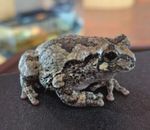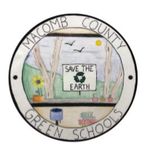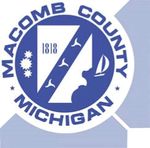PASSPORT - MACOMB COUNTY GREEN SCHOOLS & HURON-CLINTON METROPARKS - TO YOUR METROPARKS
←
→
Page content transcription
If your browser does not render page correctly, please read the page content below
MACOMB COUNTY GREEN SCHOOLS
& HURON-CLINTON METROPARKS
2020-2021
PASSPORT TO YOUR METROPARKS
Program Locations and Getting Started Pg. 1 | Lake St. Clair Metropark Pg. 2 | Stony Creek Metropark Pg. 3 | Wolcott Mill Metropark Pg. 4PROGRAM LOCATIONS
LAKE ST. CLAIR METROPARK
Lake St. Clair Metropark Nature Center
31300 Metro Parkway
Harrison Township, MI 48045
(586) 463-4332
STONY CREEK METROPARK
Stony Creek Metropark Nature Center
4300 Main Park Road
Shelby Township, MI 48316
(586) 781-4242
WOLCOTT MILL METROPARK

Wolcott Mill Metropark Farm Center
65775 Wolcott Road, Ray MI 48096
(586) 752-5932
Wolcott Mill Metropark Historic Center
64162 Kunstman Road, Ray MI 48096-2434
(586) 749-5997
GETTING STARTED
What do I need to do to participate?
Visit the Macomb County Green Schools website at greenschools.macombgov.org to
download the guidelines and this Green Schools passport.
Read through this passport and decide which requirements are suitable for the students to fulfill.
Visit one (or all three) Metroparks in Macomb County to participate in a green adventure!*
*Please note that a Metroparks vehicle pass is required to enter any Metropark.*
The Macomb County Green Schools Program and the Huron-Clinton Metroparks have teamed up to provide
students and their families with a unique method of participating in the initiative this school year.
The Macomb County Green Schools Passport
This Category X Passport Activity also allows visiting students to fulfill additional activities in Categories B, C, & D!
Suggestions on how to do that are included here, in this booklet, or on the Macomb County Green Schools 2020/2021 Guidelines document.LAKE ST. CLAIR METROPARK NATURE CENTER
Green School Activities
CATEGORY C:
1. Participate in activities promoting the health of any Michigan Watershed
a) Participate in a student-led scavenger hunt—take pictures or write a
description about what you find. Take your Passport adventure even
further while you're here and find additional "stops" beyond what's
listed! Share with us what you find with pictures and/or written description!
b) Contact the nature center to set up a group hike guided by an interpreter.
c) Participate in a public program at the nature center. See programs at
metroparks.com/events
d) Participate in the annual Earth Day clean-up at Lake St. Clair Metroparks
in April.
Contact the nature center by calling 586-463-4332 or online at metroparks.com
Lake St. Clair Metropark Scavenger Hunt
Explore the nature area and surrounding areas within the park to discover the unique 2b) Managing for a Healthy Marsh* – Discover the ways in which we help to
features of our park and what we do to create and maintain a healthy wetland protect our wetlands from the invasive species Phragmites.
ecosystem. Stops indicated with an * have a sign to help you answer your questions. •Question – How many wetland plant species are listed as threatened or endangered?
3a) Giving the Marsh a Helping Hand* – Read about restoration efforts that have
been done to reestablish wetland habitat.
•Question – What percentage of the original Lake St. Clair coastal marsh has
disappeared?
3b) Have you Thanked the Marsh Today?* – Learn more about how the marsh
provides services to people as well as wildlife.
•Question – Name 2 things that a marsh does for people (you).
4a) A Rest Stop along the Highway* – Find out the role Lake St. Clair Metropark
plays during seasonal bird migration.
•Question – Which 2 flyways intersect over Lake St. Clair Metropark? Can you
find any of our migratory birds here today?
4b) Changing with Time* – Explore the ways in which wetlands change over time
and how habitats differ depending on their location.
•Question – Which wetland type is closest to the lake? Swamp or Marsh?
5) Lake St. Clair Beach – Our beach plays an important role in both the lives of
our wildlife and humans as well. People use beaches for recreation and fun in the
sun, while animals may use a beach as a feeding ground and resting area. We are
constantly monitoring the health of our lake along the beach to ensure it is safe for
Exploring the Nature Area – Start at the nature center and walk to the rear of the swimming. We have a lab on site at the park that does water testing and monitoring
building. There is a parking area for employees and a path that will lead you toward called the HEART lab.
the trail shortcut (dotted line by stop #1 on the map). That shortcut is a gravel •Question – What university runs the HEART lab?
walkway that will lead you into the main nature trail. (hint: can be found on the door to the lab next to the beachside grill)
1) Bioswales – to increase water quality and habitat, structures called bioswales, 6) The Return of our Wetlands – For many years this area was nothing more than
were created within the park. Rainwater from the parking lot drains into the swales mowed grass but due to higher water levels and flooding mowing has not been
and flows down into canals that filter out into Lake St. Clair. Plants called Cattails, able to occur here. Seeds from wetland plants were lying dormant below the surface
which surround the swales, help to filter out harmful pollutants in the water and just waiting for the ideal conditions to emerge! Now we can see new growth and
keep our waters clean. the return of native wetland plants.
•Question – How many bioswales can you find in our park? •Question – do you see any animals using this newly established habitat?
(hint: use the map to find them)
7) Fishing Dock* – Check out our interpretive signs and learn more about our rare
2a) Cattails: One Stop Shopping* – Learn more about our Cattail plant and how it Great Lakes coastal wetland habitat found in Black Creek Marsh.
got the name of nature’s supermarket. •Question – Name 2 fish that rely on coastal marshes.
•Question – Which animals use underwater stems as nurseries?STONY CREEK METROPARK NATURE CENTER
Call Stony Creek Nature Center at 586-781-9113 for more information
on creating wildlife habitat programming options:
NATIVE BEES: Most people recognize honeybees but did you know there are many
native bees that live around us? Small and gentle, these native pollinators are ideal
guests for your yard! This program will show you how to help these little bees by
making a simple nest box where they can raise their young.
BIRD NEST BOXES: There is more to inviting birds to a Nest Box than hanging a
wood “bird house” on a tree! Join the Interpreter to learn how you can become an
efficient and successful Nest Box landlord for native birds.
Green School Activities GARDENING FOR WILDLIFE: If you enjoy hummingbirds, butterflies and other
CATEGORY C: insects, and gorgeous flowers – go native! This program will teach you about
4. Establish or maintain an outdoor animal habitat project. beautiful but tough native flowers that will bloom year after year, attracting many
a) Participate in a student-led scavenger hunt—take pictures or write a species of wildlife.
description about what you find. Take your passport adventure even
further while you’re here and find additional “stops” beyond what’s listed! Check our website for new and upcoming virtual programming options at
Share with us what you find with pictures and/or written description! YOUR Metroparks!
b) Contact the nature center to set up a group hike or program* guided
by an interpreter. www.metroparks.com/virtual
c) Participate in a public program at the nature center.
See programs at metroparks.com/events Contact the nature center by calling 586-781-9113 or online at metroparks.com
4)White-tailed Deer
Stony Creek Metropark Deer are experts at surviving with style in wooded edges, farmlands, suburbs, even
city parks. White-tailed deer require about 9 to 12 pounds of “browse” (food) per
Habitat Scavenger Hunt day. Browse consists of buds, leaves, small stems, nuts, herbs and forbs. Look at
the Reflection Trail forest of tall trees around you. Is a forest of mostly mature trees
There are four components of a “Habitat”: good habitat for deer?
food, water, shelter and space. Plants
and Animals need these four things too! 5) Eastern Chipmunks
A Habitat enables animals to stake out a Chipmunks need heavy cover to evade predators, dig their underground dens, raise
territory, survive and raise their young. This their young and find lots to eat. Each Chipmunk is very possessive about its territory
Scavenger Hunt will challenge you to answer in the habitat. Their home and food sources must be protected from trespassing
questions about Stony Creek Metropark Chipmunks. Their loud CHIP! CHIP! warns other Chipmunks to keep their distance.
animals’ Habitat needs. What habitat would offer good shelter for an Eastern Chipmunk? What seeds and
nuts would a Chipmunk find in its habitat?
1) Organ-pipe Mud Dauber Wasp
Female Mud Daubers lay their eggs in mud tubes and pack the tubes with spiders 6) Rotting Logs
for the wasp larvae to eat. Where would the wasps find mud in their habitat? Can Dead trees and rotting logs provide all sorts of living creatures a great habitat.
you find a tube? Take a photo of a mud dauber tube nest. Where would the wasps Holes in dead trees, known as “snags”, are ideal homes for animals. Rotting logs
find their spider prey? Take a photo of spider habitat. See if you can locate a spider shelter many small creatures – carefully roll over a small log and note what you
in this habitat. see. Name four animals that can live under or in a rotting log. Take photos of these.
Name other things you find on or under a rotting log.
2) Painted Turtles
Painted Turtles enjoy basking in the sun, so a pond or small lake must have plenty 7) Nest Boxes
of logs for the turtles to climb out of the water. In what habitat would you expect As you leave the forest area of Reflection Trail, you will see wood boxes on posts in
to find a Painted Turtle? Does the habitat contain several basking sites, such as the fields. These are Nest Boxes for native birds like the Eastern Bluebird and Tree
logs, that turtles may climb up on? Take a photo of basking sites. What do you think Swallow. These birds live in open fields and depend on old woodpecker holes or
a Painted Turtle could find to eat in this habitat? Where would the turtle hide if broken snags to nest in. Since holes in snags are hard to come by in open habitat,
danger approached? bluebirds and swallows often have a tough time finding a place to raise their
young. By offering appropriate Nest Boxes, in proper habitat, these birds have an
3) Stony Creek opportunity to nest. As part of the Green Schools initiative, offering Nest Boxes
Creeks and rivers are home to many species of wildlife: fish, snakes, black flies, is an option. There are many responsibilities with this as unmanaged Boxes can
dobsonflies, water beetles. These animals depend on flowing water for their habitat do native species more harm than good if alien species are allowed to use them.
needs. Herons, kingfishers, warblers and many other birds can be seen along Please learn all you can about protecting native species using Nest Boxes before
Stony Creek seeking food and shelter. Mammals such as coyotes, deer, raccoons you put up a box.
and beaver, use creeks and rivers in their habitat. What other important habitat *Thinking of your school’s property, do you think a native bird would use a Nest Box? Is the habitat appro-
features do rivers provide? Can you think of ways creeks and rivers help people as priate? Is the area busy and crowded? Are there predators nearby? Are you willing to properly manage a
well as animals? Nest Box? Write your observations, and the pros and cons of managing a Nest Box.WOLCOTT MILL METROPARK HISTORIC CENTER
Green School Activities
CATEGORY B:
6. Sponsoring an alternative energy presentation, project or event
a) Participate in a student-led scavenger hunt along the Mill Race Trail—
take pictures or write a description about what you find. Take your
Passport adventure even further while you’re here and find additional
“stops” beyond what’s listed! Share with us what you find with pictures
and/or written description!
Make sure to visit the Wolcott Mill Farm Center after your trip to the Historic Center!
Using Water as a Power Source
at Wolcott Mill:
A Scavenger Hunt
Take a hike down the Mill Race Trail to uncover the ways in
which Wolcott Mill harnessed the power of water as an
alternative energy source during its time as a working grist
mill. Use the interpretive signage to help find the answers
to your scavenger hunt.
1) When the mill was constructed in the 1840s, the miller had to dig a mill race. 5) True or False: Workers used a set of wooden doors to control the water flow on
What is the function of a mill race? the river, either closing them when the mill needed water or opening them to allow
the river to flow naturally.
a) To collect water to irrigate crops
b) To store excess rain water for further use You will walk along the North Branch of the Clinton River. Rivers like the Clinton have
c) To divert water from a river in order to provide power to a mill many branches called tributaries. The North Branch eventually empties into the
d) For outdoor bathing main branch of the Clinton River, leading into Lake St. Clair. For the final questions,
walk towards the historic mill.
2) As you walk along the mill race trail, you are walking along the remnants of
the old mill race that was dug and re-dug by the milling families like Fred Wolcott 6) The mill used water power for many decades to power all its machinery,
and his family. This is an example of people altering the landscape for a specific including mill stones, rollers, elevators, and pulleys. A grist mill like the Wolcotts’
purpose. On your hike today, can you find an example of where an animal also processed grain to make food products. What kind of products could you get at
altered the landscape for a specific purpose? Wolcott Mill?
3) The water from the mill race was used at the mill to power the machines inside. a) Pancake flour
What method(s) were used to transfer water power into mechanical power? b) Animal feed
c) Pastry flour
a) A waterwheel d)All of the above
b) A combustion engine
c) A set of turbines 7) True or False: Beginning in the 1920s, the Wolcotts used solar power in addition
d) A and C to the water power to run the mill.
You have now reached the site of the dam. This dam originally spanned the entire
width of the Clinton River but was partially destroyed by storms and subsequent Thank you for visiting Wolcott Mill
flooding in the 1970s. Metropark! We hope you enjoyed
the scavenger hunt. Come visit us
4) The dam you are looking at was constructed in 1932, and made of strong concrete. again at the Historic Center and
The first dam was made nearly a hundred years before that. What materials was Farm Center!
the first dam made from?CONGRATULATIONS!
YOU DID IT!
In order to show that you participated in the Passport to YOUR Metroparks activity, check
the box below and send a selfie to your teacher to show you’ve completed that park’s Passport!
Your teacher will be provided with an answer sheet for scavenger hunt questions.
LAKE ST. CLAIR METROPARK

STONY CREEK METROPARK

WOLCOTT MILL METROPARK

Macomb County Board of Commissioners
1 South Main Street, 9th Floor
Mount Clemens, MI 48043
Huron-Clinton Metroparks
13000 Highridge Drive
Brighton, MI 48114You can also read



























































